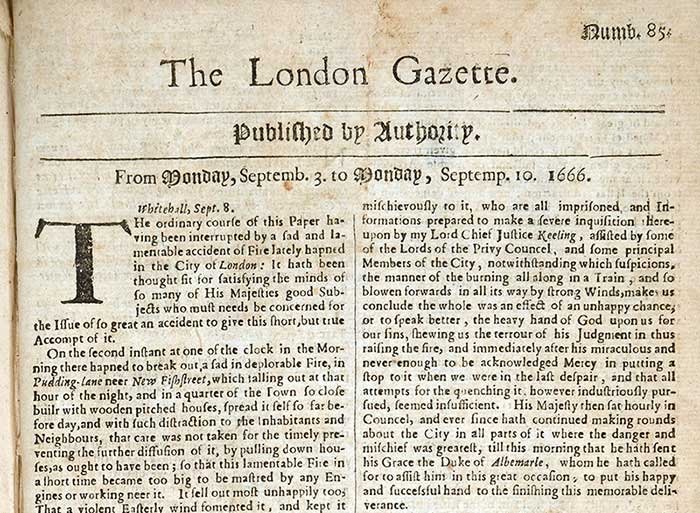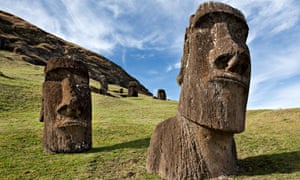Discovery of slimy sea creature could help settle row over early evolution of vertebrates
via the Guardian by Nicola Davis

The fossil of a 12-inch creature embedded in a slab of Cretaceous-period limestone from Lebanon. Photograph: Tetsuto Miyashita/University of Chicago
The fossilised remains of a foot-long slimy sea creature dating from 100m years ago suggest that the last common ancestor of all vertebrates looked less like a squishy eel and more typically “fish-like”, researchers claim.
They say the fossil, unearthed around eight years ago in Lebanon, is an early hagfish, a peculiar creature that has no jaws, eyes or true vertebrae but that boasts the ability, when threatened, to squirt out a mixture that turns into an expanse of slime.
Continue reading
==============================
Once upon a time, Europe’s animal kingdom was as diverse as Africa’s.
via the New Statesman by Mark Cocker

A deinotheres features in a 19th-century depiction of prehistoric Europe
Here are two authors that delight in big-picture natural history but viewed from opposite ends of the telescope, so to speak.
At which point I could not find a suitable place to stop so I bring you the two titles and sak you so please continue reading
- Darwin’s Most Wonderful Plants: Darwin’s Botany TodayKen Thompson
Profile, 256pp, £10.99 - Europe: A Natural HistoryTim Flannery
Allen Lane, 368pp, £25
via Boing Boing by Jason Weisberger
==============================
via Interesting Literature
‘Autumn Rain’ is not one of D. H. Lawrence’s most famous poems. He wrote a great deal of poetry, and whilst some of it falls short of the greatness we associate with his novels and short stories, ‘Autumn Rain’ shows his delicate control of poetic syntax and his inventiveness with imagery. Here is ‘Autumn Rain’ and a few words of analysis.
Continue reading
==============================
Interactive map reveals the horror — and the patterns — of murder in 14th-century London.
via the Big Think blog by Frank Jacobs

- This map shows the 142 murders that were committed in London from 1300 to 1340.
- Each clickable pin reveals the grisly details as recorded in contemporary coroner's reports.
- Then as now, stabbing was the main method of killing in London — but the murder rate was three times higher.
via The National Archives Blog by Jack Avery
The disaster of the Great Fire of London was keenly felt by those who had lost everything to the blaze in early September 1666. Among them were the women who worked the capital’s streets distributing the only newspaper of the time, ‘The London Gazette’. In letters preserved at The National Archives one of these women, Mrs Andrews, pointed out that she had lost all her worldly goods and had ‘noe more cloathes than shee had on her back’.

ZJ 1/1 (1) London Gazette 3 September 1666
Continue reading and discover this fascinating story of news distribution for yourself.
==============================
Location of statues was based on nearby fresh water and other resources, says US study
via the Guardian by Nicola Davis

Binghamton University researchers found that Easter Island’s moai statues were built close to sources of fresh water. Photograph: Alamy
The huge stone figures of Easter Island have beguiled explorers, researchers and the wider world for centuries, but now experts say they have cracked one of the biggest mysteries: why the statues are where they are.
Researchers say they have analysed the locations of the megalithic platforms, or ahu, on which many of the statues known as moai sit, as well as scrutinising sites of the island’s resources, and have discovered the structures are typically found close to sources of fresh water.
Continue reading
==============================
via Interesting Literature by Dr Oliver Tearle

‘Little Bo-Peep’ is a classic nursery rhyme, probably one of the most famous in the English language. But what are the origins of ‘Little Bo-Peep, and what does it mean? Before we attempt an analysis of this children’s rhyme, here’s a reminder of the words:
Continue reading and discover, as I did, that there are many more verses than I remember from my childhood or from singing with my children.
==============================
via Arts & Letters Daily: Terry Teachout in Commentary
How the embrace of other media made New York’s theater district iconic

In the 2017–18 theater season, 63 percent of the 13.8 million tickets sold to performances of Broadway shows were bought by tourists who live outside New York City and its suburbs. No other American city can make a comparable claim. Despite the high quality of theater elsewhere in the U.S., New York remains America’s only “destination city” for live theater, as has been the case since the 1920s, when Times Square became its theater district. Of the shows that out-of-towners go to see, musicals make up 83 percent. Indeed, Broadway and musical comedy are for most people one and the same thing. Yet despite the diminished place of the stage play in Broadway’s latter-day economy, it is also true that an American play must sooner or later be produced there for it to be generally acknowledged as significant.
Continue reading
==============================
via About History

History
From ancient times, warriors came to the conclusion that they needed some short stabbing weapon that they could always carry around, and that is convenient to use in situations where it is not possible to move with a sword, club or spear. A popular opinion is that the first daggers were made of wood and bone. Originally the unprocessed horns of animals were used as daggers.
Continue reading
No comments:
Post a Comment